The Seaweed and Integrated Multi-Trophic Aquaculture (IMTA) Research Laboratory of
Dr. Thierry Chopin
A Culinary Celebration of IMTA Products
Local IMTA products featured at the Saint John Ale House
November, 2013
The Canadian Integrated Multi-Trophic Aquaculture Network (CIMTAN) held its third Technical Workshop in Saint John, New Brunswick, on November 20-21, 2013. The theme of the workshop was "IMTA System Design, Hydrodynamics, and Extractive Organism Positioning".
Interestingly, almost 10 years ago (March 25-26, 2004), a workshop was held in the very same room at the Saint John Hilton Hotel. It led to the creation of the IMTA acronym: Thierry Chopin came with "Integrated Aquaculture" and Jack Taylor came with "Multi-Trophic Aquaculture"; the two were combined into "Integrated Multi-Trophic Aquaculture" and the term IMTA was coined.
The 2013 workshop demonstrated how much work has been accomplished and how a better understanding of each component of an IMTA system has been gained. There has been a lot of progress in less than a decade. It is interesting to note that more than 400 papers have been published worldwide on IMTA, which illustrates the interest for this ecosystem responsible aquaculture practice.
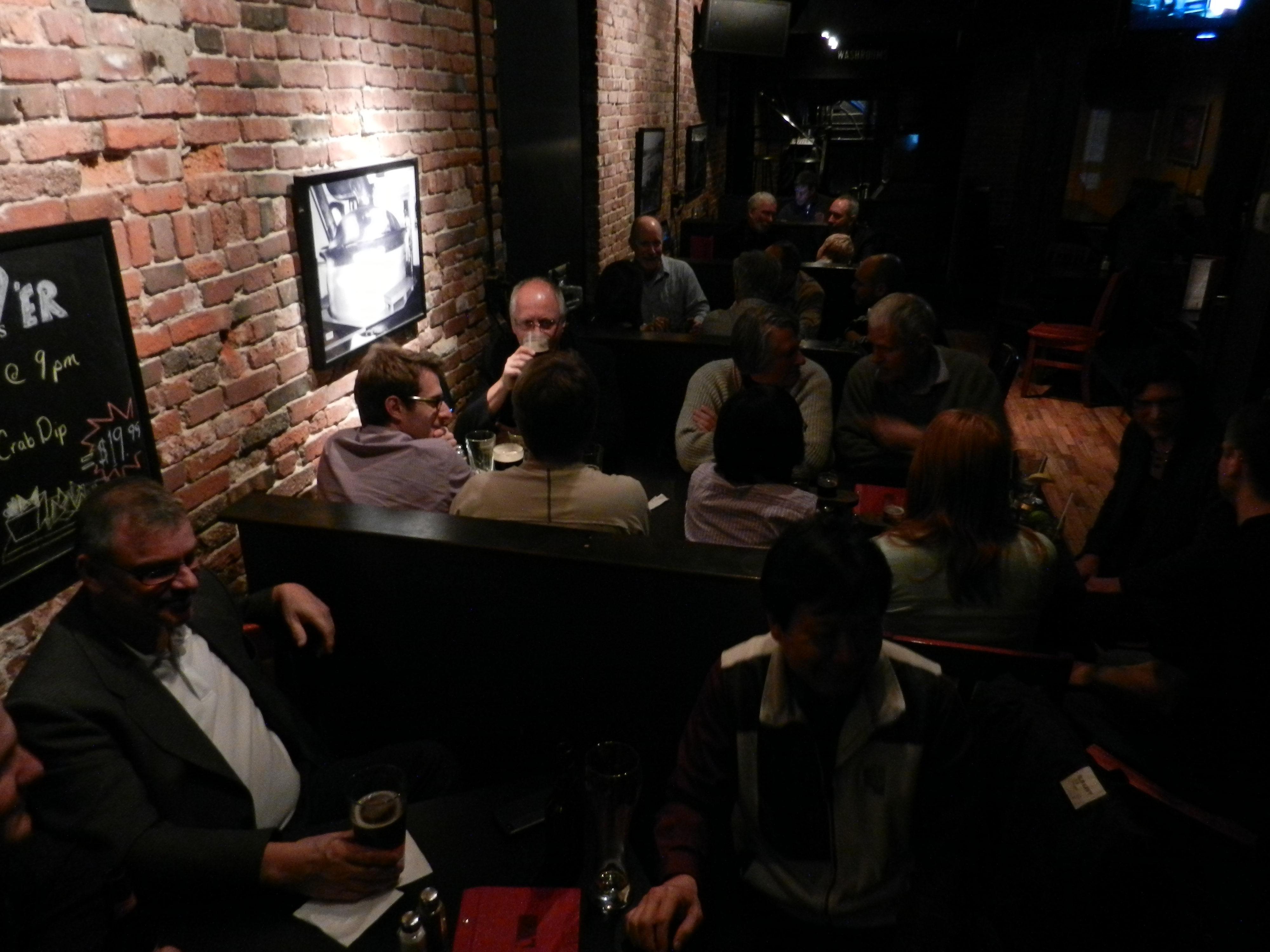 The workshop dinner on November 20, 2013, was turned into a special three course dinner to celebrate our local IMTA products from the Bay of Fundy. Thierry Chopin worked with the Executive Chef of the Saint John Ale House, Jesse Vergen, to develop an elaborate menu integrating sugar kelp (Saccharina latissima), blue mussel (Mytilus edulis), Atlantic salmon (Salmo salar), dulse (Palmaria palmata) and Irish moss (Chondrus crispus). After a reception from 6:00 to 7:00 pm, the guests were invited to the upper room of the Saint John Ale House for the dinner.
The workshop dinner on November 20, 2013, was turned into a special three course dinner to celebrate our local IMTA products from the Bay of Fundy. Thierry Chopin worked with the Executive Chef of the Saint John Ale House, Jesse Vergen, to develop an elaborate menu integrating sugar kelp (Saccharina latissima), blue mussel (Mytilus edulis), Atlantic salmon (Salmo salar), dulse (Palmaria palmata) and Irish moss (Chondrus crispus). After a reception from 6:00 to 7:00 pm, the guests were invited to the upper room of the Saint John Ale House for the dinner.
The first course – Mussel Escabeche with Sherry Pickled Kelp and Mussel "Air" – was a most interesting creation of Chef Jesse Vergen. An escabeche is a Mediterranean cold dish of either poached or fried fish macerated overnight in an acidic marinade. The dish is common in Spain, Portugal, South of France (Provence), Latin America and the Philippines. The origin of the word escabeche is Persian, and is believed to have been brought to Spain by the Arabs during the Moorish conquests. The acid in the marinade is usually vinegar, but can also include citrus juice.
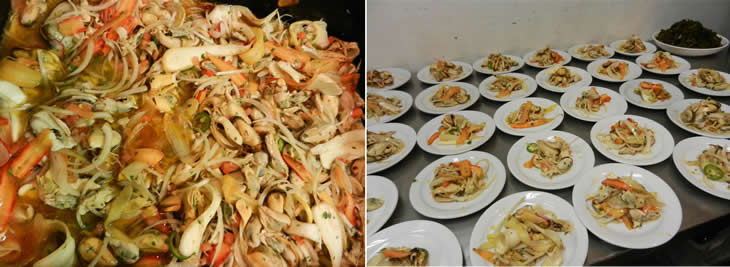
Chef Jesse Vergen's escabeche was made not with fish but with IMTA blue mussels, and they were, indeed plump! The vegetables included carrots, turnips, radishes, onions, jalapeño and red peppers and tomatoes. A julienne of IMTA sugar kelps, which had been pickled overnight in a Sherry vinegar brine, topped them off. To complete the recipe, a few spoons of mussel "air" (frosted juice of some of the liquid in which the mussels had been cooked) were spread over the kelp julienne. Based on the reactions of the guests: an original, and very tasty, big hit!
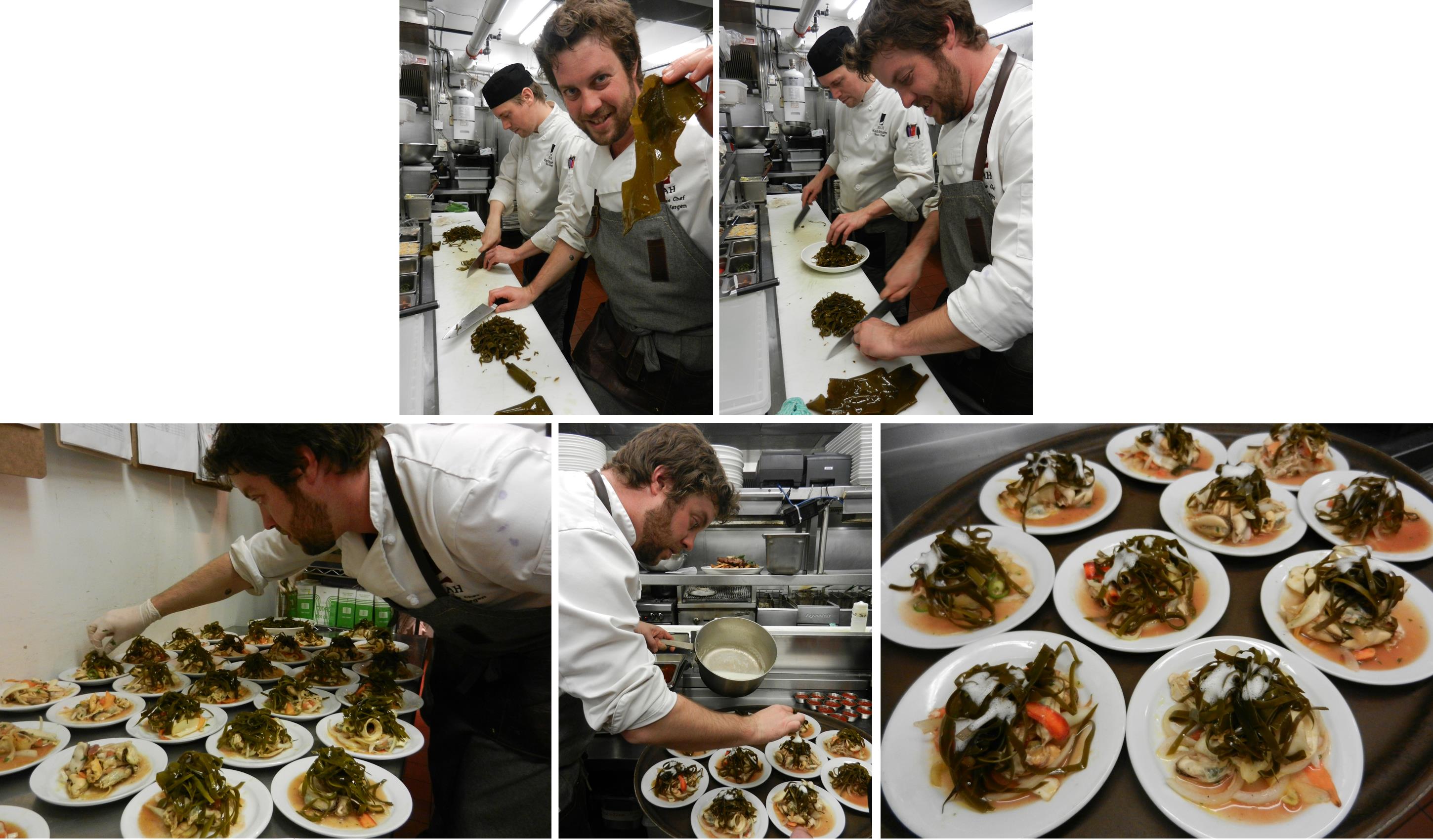
The main course – Molasses Glazed Atlantic Salmon, Braised Fennel, Roasted Tomatoes and Confit Potatoes with Fire Grilled Dulse – was a more conventional dish, but deserves a few comments. The Atlantic salmon was provided by Cooke Aquaculture Inc., like the other IMTA products. The fennel provided a nice anise touch. The tomatoes and potatoes were nicely roasted and cooked. The dulse, being fire grilled, offered some greenish metallic reflects. The red pigments (phycoerythrins, phycocyanins and allophycocyanins) typical of red seaweeds being destroyed by the heat, the normally masked green pigments (chlorophylls a and d) could be seen. We hope to bring dulse into our portfolio of seaweed species for the inorganic extractive component of marine IMTA soon; however, its unique life cycle does not make it easy for its domestication (see the entry S… S… S… on the website of Thierry Chopin).
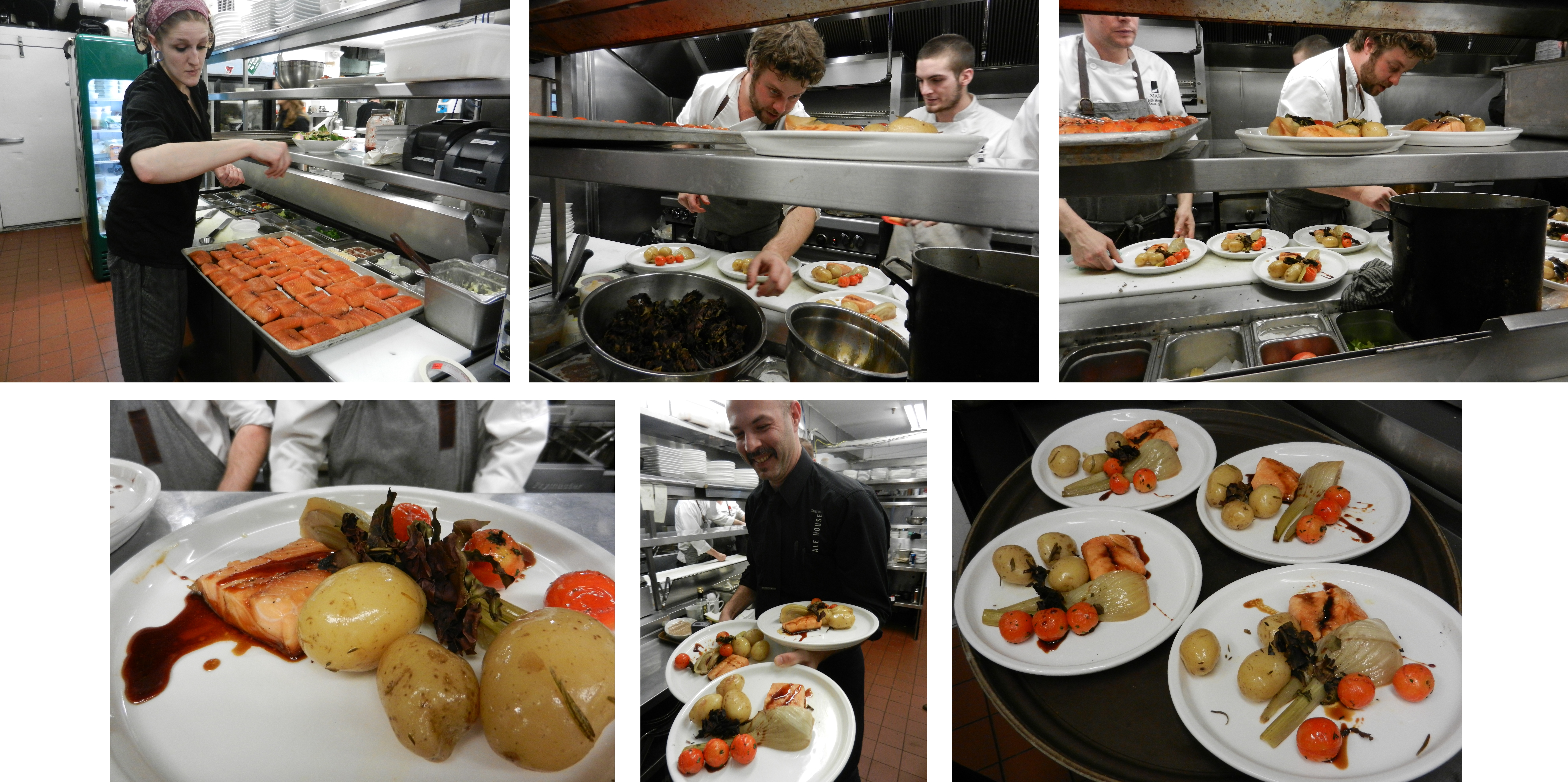
The third course – Irish Moss White Chocolate Panna Cotta, Lemon Crumble and Salmon Candy – was another creation of Chef Jesse Vergen and another taste buds tantalizer! A panna cotta (Italian for cooked cream) is a dessert made by simmering together cream, milk, sugar and gelatin, which sets the dessert into a kind of firm custard when the warm solution cools down. It is generally believed to have originated in the Northern Italian region of Piedmont, although it is eaten all over Italy, where it is served with wild berries, caramel, chocolate sauce or fruit coulis. Earlier recipes for the dish did not directly mention gelatin, but instead included a step in which fish bones were boiled; this is now known to extract collagen from the bones, which turns to gelatin. Chef Jesse Vergen used another well-known gelling agent, the carrageenans, which can be extracted from red seaweeds such as Irish moss. Carrageenans are cell-wall sugars, which diffuse naturally from Irish moss dipped in boiling milk and trigger the formation of a strong gel upon cooling down of the liquid solution. In fact, the recipe was well-known in France, in the Bretagne and Vendée regions, where Irish moss grows along these shores of the Eastern Atlantic Ocean. The people from these regions who migrated in the 1600's to become the Acadiens, populating l'Acadie along the Western Atlantic Ocean, brought the recipe with them and Blanc Mange is the Acadian version of the Italian Panna Cotta. Chef Jesse Vergen added on top of the gelling dessert some lemon zest, lemon crumble and a piece of salmon candy, a new delicacy developed by Atlantic Fish Specialities Ltd., the value-added product line subsidiary of Cooke Aquaculture Inc. in Prince Edward Island. Again, an original, and this time very sweet, big hit with the guests!
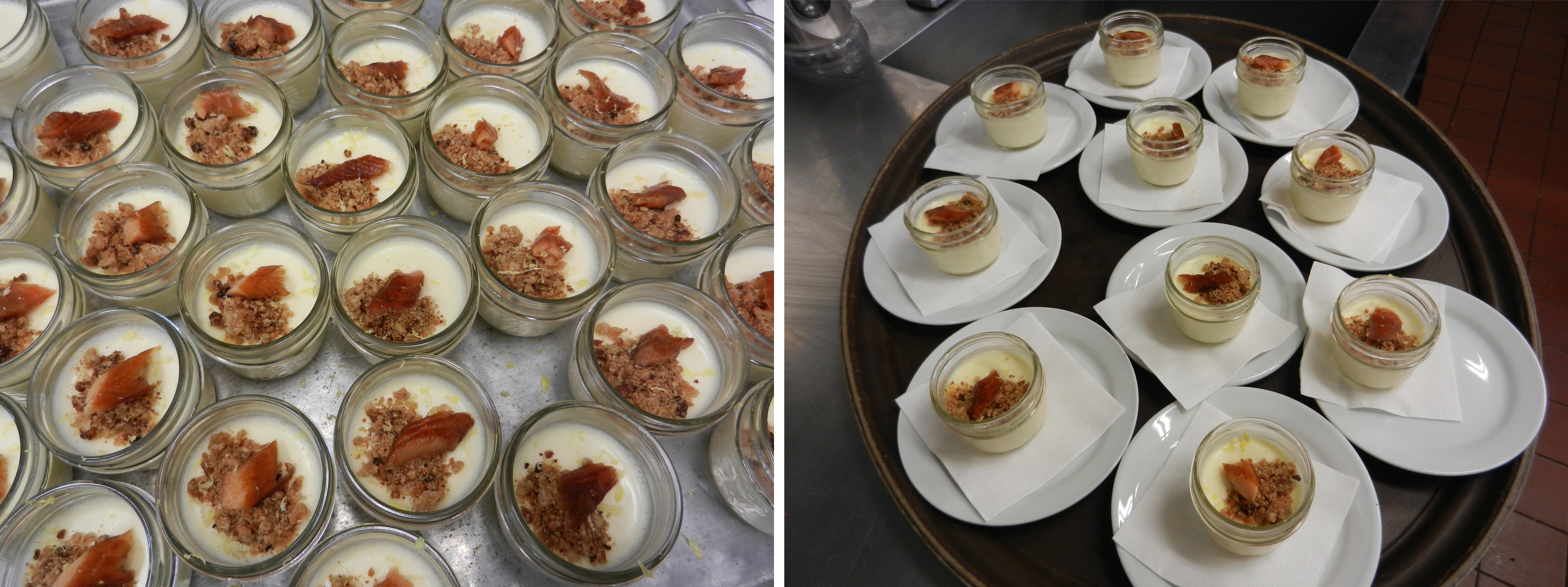
At the end of the dinner, Thierry Chopin thanked Keng Pee Ang and Lenny Totten, from Cooke Aquaculture Inc., for having provided all the IMTA products, and recognized the special guests of the evening: the two invited speakers of the workshop, Joao Ferreira of the New University of Lisbon in Portugal, and Øivind Strand of the Institute for Marine Research of Bergen in Norway; His Worship the Mayor of St. Andrews, Stanley Choptiany; Pierre Rioux, representing the New Brunswick Department of Agriculture, Aquaculture and Fisheries; Tim Jackson, representing the National Research Council - Industrial Research Assistance Program; and Barb Rayner from the St. Croix Courier newspaper.
Thierry Chopin also commented on the picture he had shown earlier in the day of Jack Taylor (now retired from Fisheries and Oceans Canada). Next to Jack Taylor was a bottle of wine that Thierry Chopin had given him on March 26, 2004, to thank him for his contribution to the nascent IMTA. That bottle was a bottle of Beaujolais Pisse-Dru (Thierry Chopin is a native of the Beaujolais region in France). The name "Pisse-Dru" comes from an amusing vintner's expression: when an old vigneron says with a smile of satisfaction on his face, "ça pisse dru" ("it's peeing straight"), it means in French slang that the new vintage he has just tasted is to his liking and that the fresh juice of the grape will grow into a delicious bottle of wine. On the occasion of this special IMTA dinner, Thierry Chopin gave another bottle of Pisse-Dru to another "straight shooter" of IMTA: Lenny Totten, the IMTA Manager at Cooke Aquaculture Inc. Lenny has been working tirelessly on many aspects of IMTA and deserves to be recognized by the academic community working closely with industry to make IMTA a reality in Southwest New Brunswick and beyond.
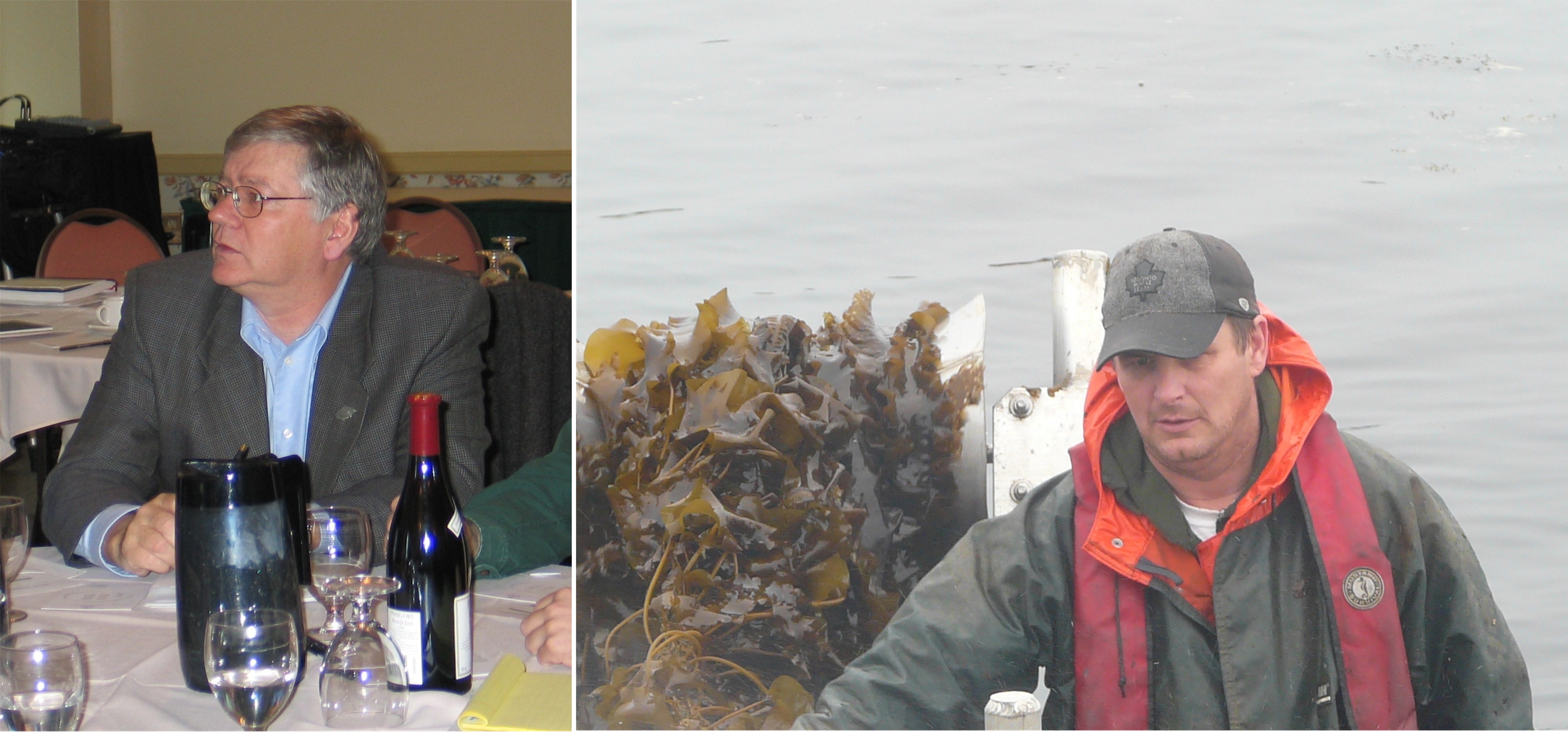
Click here to read the article of Barb Rayner in The St. Croix Courier

The pictures on this page, and throughout the entire website, are property of their owners. As such, they cannot be used, or reproduced, without their expressed consent.
 Accessible Version
Accessible Version